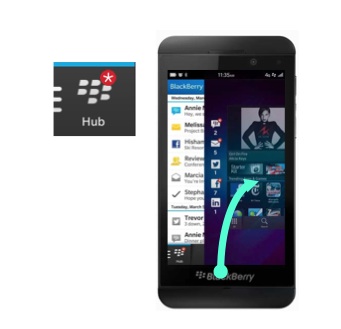This article is more than 1 year old
Five things that doomed the big and brilliant BlackBerry 10
So long, and thanks for all the emails
3. BB10 was too big

By the time of the BlackBerry 10 launch in 2013, much of RIM's remaining consumer base was in distinct niches. In a few markets like the UK, under-25s had been all-BlackBerry a few years before. Those that were left tended to be on pre-paid contracts, and not locked in.
Social groups clustered around BlackBerry because of the brilliant BBM experience, a social network baked into hardware. Once those social groups found other tools, there was nothing to keep them on BlackBerry.
BlackBerry had scored some success by repeating the trick in price conscious emerging markets such as Indonesia and South Africa. In fact, the burgeoning revenue throughout 2011 and 2012 had lulled executives into complacency.
All this meant that the newer, modern BlackBerry 10 had to be price competitive with the older BBOS devices, or if it wasn't, needed to get there very quickly. If that didn't happen, BlackBerry would be nuked from the consumer market almost instantly. Which is exactly what happened.
BB10 not only needed a modern processor and graphics chipset, the target was that it would run in 1GB of RAM inside the PlayBook tablet. BlackBerry kept promising BB10 would be back ported to the PlayBook, as late as 2013. But it couldn't keep the promise and run BB10 with decent performance in so little RAM.
The size of BB10 meant BlackBerry had to sell premium contract devices. It didn't fashion together a "budget" device for emerging markets (the Z3) until over a year later, and even then, was a 1.5GB model.
It's notable that as BlackBerry's consumer market share collapsed after the BB10 launch, much of it was picked up by low cost Windows 8 devices, such as the sub-£150 Lumia 520, which whizzed along in just 512MB of RAM.
2. It was weird and it was buggy

Having waited until many of its customers had fled, and then made its BB10 phones so expensive that most of those who were left couldn't afford them, the Endurance show isn't over. BlackBerry put two more hurdles in front of the remaining diehards: BB10 wasn't finished, and it was a steep road bump for existing users.
I doubt even the most enthusiastic fanbois will claim that BlackBerry 10 was mature or polished on arrival. It had already been postponed and the devices simply had to come out, whether the OS was ready or not. And it wasn't.
For the first year it was a battle to select and manipulate text on the touchscreen. Battery life veered wildly between point releases. Almost a year on, BlackBerry was starting to settle down, and gain most of the basics it need to have at launch. And lots of nice features of its own.
A tiny incremental change (to 10.2.1) gave it a leap in Android compatibility. By then Apple and Google were copying BlackBerry's ideas and with nobody using the system, lapping up the credit. BB10 still has annoying bugs: try pasting a URL from the browser using the system clipboard.
Another reason made for a bumpy launch: usability. The radical all-gesture UI took a bit of getting used to. The key gesture was a peculiar "dog-leg", or right angle movement. Once someone demonstrated it to you, you didn't look back.
But retail partners couldn't be bothered (or incentivised) to do that, and so the BlackBerrys remained untouched, unsold and quickly disappeared from the high streets.
The Q10 physical QWERTY model which CEO Thorsten Heins had predicted would sell in tens of millions was particularly hard work. It was an uncomfortable compromise between all-gesture and physical keys, and BlackBerry stripped out the "toolbelt" containing the trackpad.
You had to manipulate on screen items just as if it was an iPhone. One of John Chen's first orders, as replacement CEO, was to produce a Q10 with the tool belt restored, which became the BlackBerry Classic. Now with the Passport and Priv, where the physical keys double up as a trackpad, you can see what BlackBerry was working towards, but it didn't make migrating up easy at the time.
In addition, the BB10 designers had (probably correctly) decided that BIS services were a legacy that wouldn't be supported. BIS was the compression proxy magic that gave BlackBerry consumers instant push email, and carriers around the world had thousands of BIS servers installed. But the code was old and crufty, using BIS required complex SIM provisioning, and with bundled data plans it was no longer necessary.
This was a brave move that actually cost BlackBerry money, since SAFs (Service Activation Fees, split between RIM and the carrier) were a serious earner. But anyone expecting a smooth transition got a surprise.
